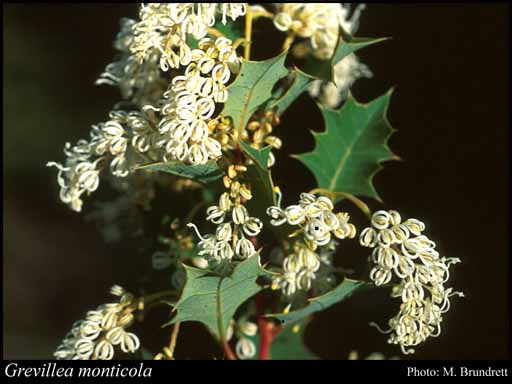- Reference
- Lehm., Pl.Preiss. [J.G.C.Lehmann] 2:259 (1848)
- Conservation Code
- Not threatened
- Naturalised Status
- Native to Western Australia
- Name Status
- Current
Spreading to erect shrub, 0.3-1.6 m high. Fl. white-cream/yellow, Jun to Oct. Gravelly soils (loam, sand) over laterite, granite. Hills, granite outcrops.

Scientific Description
Shrubs, 1-1.5 m high; branchlets glabrous or hairy, not glaucous. Leaves alternate, 25-65 mm long, 15-30 mm wide, hairy or glabrous, on the adaxial or abaxial surface, the hairs straight; lamina flat, widest around the middle, once divided, pinnately divided, shallowly divided, the margins flat. Inflorescences axillary or terminal, white or cream; pedicels 4-5.5 mm long. Perianth 3-4 mm long; tepals all free after flower opens, glabrous; ovary glabrous, stipitate, the stipe 0.5-1 mm long; pistil 6-8 mm long, white or cream, pollen presenter conical, style glabrous. Follicles glabrous, not viscid, dehiscent, 8-12 mm long. Flowers in June, July, August, September or October. Occurs in the South-west (SW) Botanical Province(s), in the Avon Wheatbelt (AW) or Jarrah Forest (JF) IBRA subregion(s).
Distribution
- IBRA Regions
- Avon Wheatbelt, Jarrah Forest.
- IBRA Subregions
- Katanning, Northern Jarrah Forest.
- Local Government Areas (LGAs)
- Beverley, Boddington, Brookton, Pingelly, Wandering, Wickepin, York.